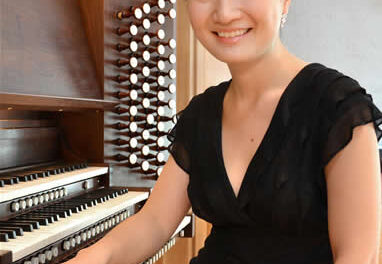The 17th season of First Tuesday Music Concerts is now in the series’ third venue, after starting out at St. Peter’s Episcopal Church, scooting over to the First Presbyterian Church in 2008, and merging with the Bechtler Museum of Modern Art at the start of its current season. Evolution has been more than geographical, for the series began as Chamber Music at St. Pete’s but now embraces pocket-sized orchestral music as well, evidenced by this month’s concert by the North Carolina Baroque Orchestra playing “Winter” from Antonio Vivaldi’s The Four Seasons, Christmas concertos by Vivaldi and Arcangelo Corelli, and Johann Rosenmüller’s Sonata No. 9.
Sponsorship of the series still comes from WDAV-FM, so there’s the customary welcoming blather from a representative of Charlotte’s classical music station, perhaps a wee bit less welcome than in years past because First Tuesday Music Concerts are no longer free. But the $5 ticket is actually less than the normal Bechtler admission price, and the concert experience is enriched by not only the knowledgeable introductions from WDAV’s Benjamin Roe but also by artistic perspectives from the Bechtler staff, in this case, VP of programming and research Christopher Lawing, who provided informative insights on Venetian cultural and architectural history.
NC Baroque dispensed with the customary coyness of concert programming, playing the best-recognized piece first rather than last. After Roe read the sonnet that Vivaldi had composed for it, David Wilson played the lead violin for “L’inverno,” the last of the Four Seasons concertos. There were nine musicians onstage, eight string players and an organist pumping out a continuo, producing an ensemble sound that was perfectly weighted for the fourth floor gallery, with a fine balance between soloist and ensemble. Wilson wasn’t always the model of clarity in the swifter sections of the outer Allegro movements, where there were also lapses in intonation, but the double-bowed passages were nicely rounded in the shivery part of the opening movement. Slower episodes were beautifully expressed from the outset, beguilingly sweet in the middle Largo over the pizzicato violins, and downright plummy over the continuo in the closing Allegro through the first acceleration. If the final flurry of the winter winds was slightly sloppy, it was nonetheless exhilarating.
The one-movement Rosenmüller sonata had a nicely varied structure, slow churchly episodes alternating with faster sections that struck me as bucolic, cosmopolitan, and fugal in turn before we doubled back to the bucolic vein. The string forces were trimmed to seven and there was no continuo, yielding the most chamber-like sound of the program. With the continuo back in place and Martie Perry playing the lead violin, Vivaldi’s Christmas Concerto proved to be the most striking piece of the evening, at least in its opening Allegro. Perry convincingly turned the work into a pastorale for a few fleeting moments, producing a wan piping sound that seemed to be coming out of the continuo organ! Technically, her playing was slightly more problematical than Wilson’s at the faster tempos, but her proficiency improved slightly in the closing Allegro, where she navigated a cadenza as well as playing the lead, radiating joy throughout. Perry was most impressive in the middle Adagio, which is positively mystical in its beauty.
All hands were on deck for Corelli’s Christmas Concerto – six violins, a viola, a cello, and the continuo playing together without a conductor. Yet the ensemble playing was better here than in the preceding pieces, indicating that this is not merely one of the best-loved pieces in the NC Baroque’s repertoire but also one of the best-rehearsed and most-frequently played. While the First Presbyterian would have been a more conducive setting, the ensemble achieved a markedly rich, sanctified sound from the opening Vivace onwards. In the third movement Adagio, there were moments that were absolutely hypnotic in their repose, transitioning smoothly to another lively Vivace, this one in 3/4 tempo. Perhaps the sharpest ensemble work was lavished on the penultimate Allegro movement, a sprightly piece that flowed ever so naturally into the closing Pastorale, another triple-metered gem, mellowed by a little more assertiveness from the continuo.
I took Lawing’s references to the Alberto Giacometti painting of Venice to our rear and the connection between the famed sculptor’s brother, Bruno Giacometti, and the Venice Biennale arts festival as sufficient invitation to linger in the gallery and explore all the Giacomettis on exhibit – before moving on to the other adjoining galleries on the fourth floor. Since the monthly First Tuesday series always comes on the one day each week when the museum is closed to the public, I had an almost-private communion with the Giacometti exhibit, “Memory and Presence.” Just as good, even though I arrived late to the post-concert reception in the first-floor lobby, there was still an ample spread of wine, cheese, crackers, cookies, candies, and fruits to choose from. At least there was this time: the transplanted First Tuesday Music Concerts are still an after-work treat, and audiences are sure to grow as the word spreads.











